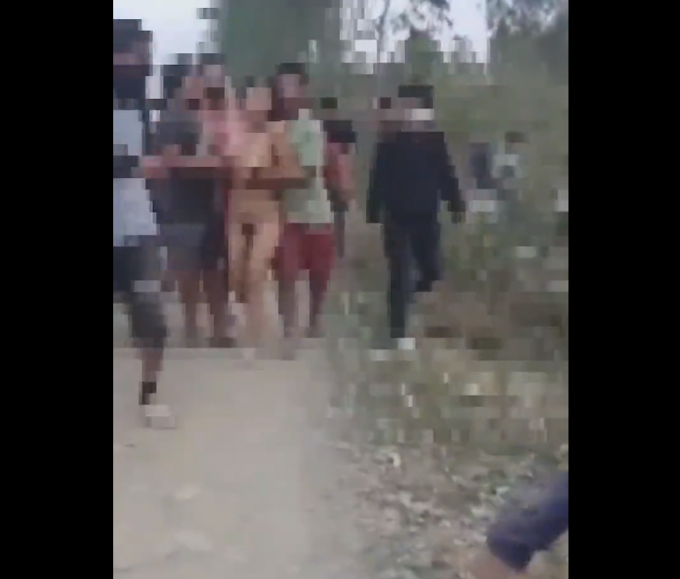YouTuber and comedian Samay Raina is now facing the possibility of additional legal challenges after an application was filed before the Supreme Court that alleges some of his videos mock people with disabilities. This development follows ongoing investigations related to the India’s Got Latent controversy, which previously raised concerns about content posted by certain online influencers. The latest allegations claim that Raina’s videos ridiculed people with Spinal Muscular Atrophy (SMA), a rare and debilitating condition, as well as individuals who are blind or cross-eyed. The application, filed by the Cure SMA Foundation, highlights specific instances of mockery and questions the ethical responsibility of online content creators, particularly when their material targets marginalized groups.
In its filing, the Cure SMA Foundation expressed concern that such videos could perpetuate harmful stereotypes and desensitize the public to the struggles of those living with disabilities. The foundation cited specific videos where Raina allegedly mocked the treatment of a two-month-old SMA patient, who required a life-saving injection worth ₹16 crore. This particular case had garnered national attention when the Supreme Court intervened in 2021, allowing the child to receive the treatment by waiving the ₹6 crore import duty on the drug. Crowdfunding efforts were subsequently initiated, and the child was able to receive the necessary treatment, but the foundation argued that Raina’s approach in making light of such sensitive topics was disrespectful and harmful.
The Foundation's application also accused Raina of making derogatory comments about blind and cross-eyed individuals, raising concerns about the normalization of ableism in popular media. In addition to the SMA-related videos, the applicant pointed to a video involving cricketers Yuvraj Singh, Harbhajan Singh, and Suresh Raina, which allegedly mocked people with disabilities. The foundation argued that such content was not an isolated incident but part of a broader pattern of demeaning portrayals of individuals with disabilities in entertainment and media.
The Supreme Court was visibly concerned about the impact of these videos. Justice Surya Kant, speaking on behalf of the bench, remarked, "This is a very serious issue. We are disturbed to see that." Justice Kothishwar Singh, who was also part of the bench, echoed these sentiments, highlighting that the issue raised profound ethical and legal questions about how online content is regulated, especially when it concerns vulnerable groups. The court acknowledged the gravity of the situation and suggested that the applicant file a separate petition to address these concerns in a more focused manner. Justice Kant also urged the applicant’s counsel to present the relevant video clippings as evidence and initiate proceedings to add Samay Raina as a party to the case. This move signals the potential for legal action that could extend beyond just the current controversy.
The Cure SMA Foundation has called for stronger regulations on online content, arguing that people with disabilities are often treated as objects of ridicule or public entertainment. This case reflects a broader societal issue, where vulnerable individuals, including those with disabilities, continue to be marginalized, both in mainstream media and online platforms. The Foundation has argued that platforms like YouTube and other social media sites need to do more to protect these communities from harmful or exploitative content.
This legal matter has also unfolded in the context of investigations involving other prominent figures, including podcasters Ranveer Allahbadia and Ashish Chanchlani, who have been associated with the controversial content. During the hearing, the Supreme Court not only addressed the concerns raised by the Cure SMA Foundation but also touched upon Allahbadia’s request for the release of his passport. Advocate Abhinav Chandrachud, who represents Allahbadia, responded to the court’s queries by asserting that his client had no direct involvement with any of the other individuals named in the case, aside from appearing on the show in question. The court’s focus on Allahbadia suggests that the legal proceedings surrounding him may have wider implications for content creators, potentially leading to stricter accountability standards.
The Maharashtra government informed the court that its investigation into Allahbadia’s role in the controversy is nearly complete, and the chargesheet is ready to be filed. However, the investigation in Assam is ongoing, with one of the co-accused summoned to appear before authorities. The court has instructed Solicitor General Tushar Mehta to clarify whether Allahabadia is still required for further investigation. The decision regarding Allahbadia’s passport release will be contingent on this update. The Supreme Court also inquired about other co-accused who have yet to appear before the authorities, further suggesting that the investigation could expand to include more individuals associated with the controversy.
This case represents an important moment in the ongoing conversation about the regulation of online content and the responsibilities of content creators. The scrutiny of figures like Samay Raina underscores the growing concern about the ethical implications of humor, satire, and entertainment that targets vulnerable groups. As the matter progresses through the legal system, it highlights the need for clearer standards to ensure that online platforms do not become venues for harmful or discriminatory content. The Court’s involvement in this case signals a potential shift towards more stringent oversight of online influencers and content creators, especially as the internet continues to play an ever-increasing role in shaping public discourse.
The outcome of this case could have significant implications for how online content is regulated and how individuals with disabilities are portrayed in media. It may also prompt a reexamination of how the law addresses freedom of expression in the digital age, particularly when it intersects with issues of social responsibility and the protection of marginalized groups.



